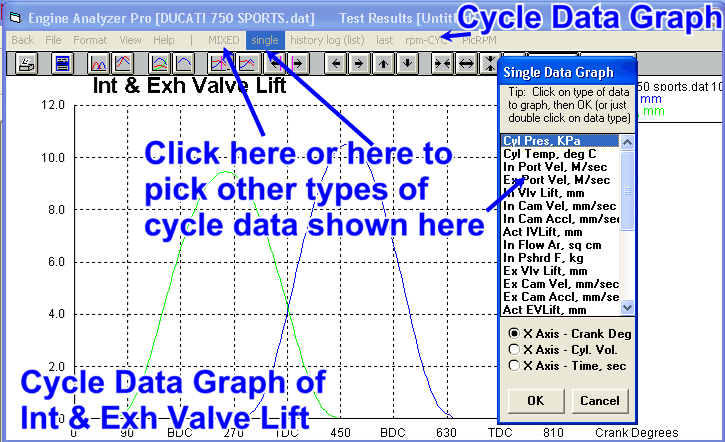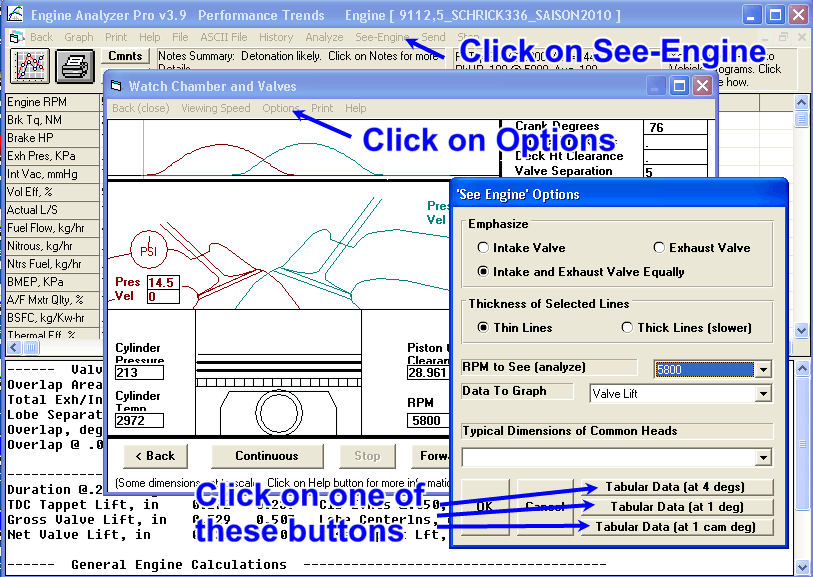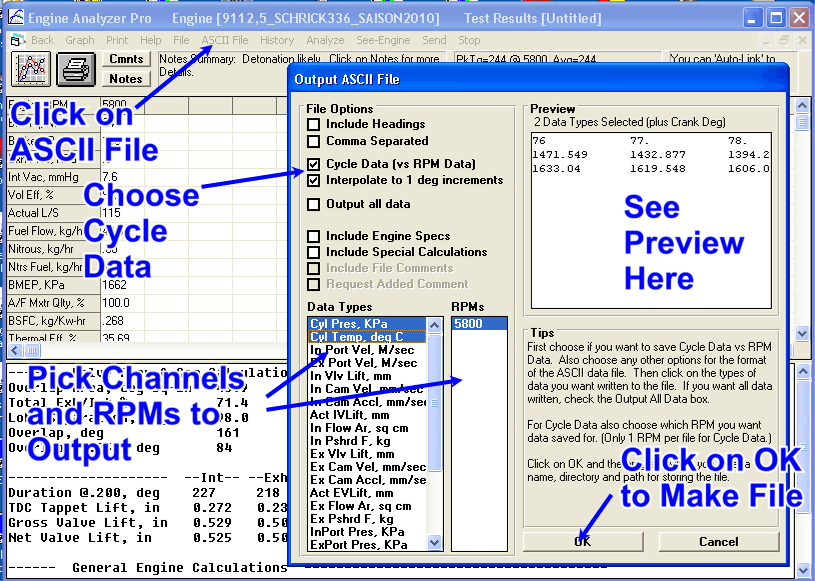Our engine performance simulation program (Engine Analyzer Pro) produces what we call RPM Data like torque, HP, fuel flow, BSFC, etc at each RPM of the run. It also produces Cycle Data which are things like cylinder temperature, cylinder pressure, piston thrust on the wall, intake valve lift, intake valve flow, etc at every 4 degrees of crankshaft rotation. (Behind the scenes the data is being calculated at something more like every .1 degrees, but we only report it at every 4 degrees.)
This Cycle Data is one thing which really sets the Engine Analyzer Pro apart from other simulation programs. You can graph it and gain tremendous insight into the internal workings of your engine. However some people want to export it into other programs like Excel ™ to do their own analysis. The Engine Analyzer Pro provides several methods to let you analyze and export this Cycle Data.
Shown below are some tips for producing Cycle Data graphs. Choose Cycle Data graphs by clicking on the “rpm-CYC” menu option. If you are currently doing RPM data, this menu option is shown as “RPM-cyc”. Then you have the choice of doing Cycle Data graphs of “MIXED” data (from one to 4 different cycle data types on one graph like in the graph below of Int and Exh Valve Lift) or just “SINGLE” data graphs (where you pick just one data type from a list as shown below).

You can also use the “See-Engine” option at the top of the tabular results. Click on “See-Engine” to bring up the Piston-to-Valve Clearance screen. There you can watch the interaction of the valve lifts, piston position, cylinder and port pressures and flows to truly better understand what goes on inside the engine. There you can also click on Options to bring up the See-Engine Options screen, where you can choose to export Tabular Data of the data used on this screen to Notepad.

You can also use the “ASCII File” option at the top of the tabular results. Click on “ASCII File” to bring up the Export ASCII File screen. There you can chose most any RPM Data or Cycle Data to export to an ASCII (text) file in various formats. This file can be imported to Excel for most any analysis you wish.

By looking “inside” the engine, you can gain tremendous understanding about how modifications affect engine performance.